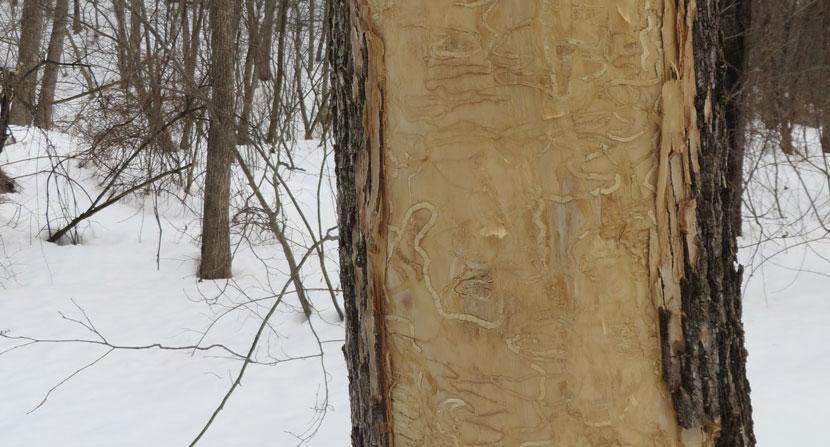- Tags:
- Invasives and Pests

Serpentine galleries from larval feeding just below the bark are one form of visible damage from Emerald Ash Borer.
The emerald ash borer is one of several insects causing significant damage to native ash trees in New Hampshire. It was first discovered here infecting ash trees along the Merrimack River in Concord in 2013, including ash trees located on the Forest Society’s 100 acre floodplain forest reservation located between the western end of Portsmouth Street and the Merrimack River in East Concord. Visit NHBugs to learn more about EAB, its range of impact in New Hampshire and other insects that threaten Granite State trees and forests. You can read more details about current quarantines on transportation of ash trees in New England HERE.
Scientists studying the ecological integrity of forests cite the disruptions caused by non-native insects and pathogens as one of the largest threats to the health of trees and their natural communities. Global trade is one of the culprits. The most recent assessment by the International Panel on Climate Change suggests that a warming atmosphere could alter the ecological relationships between forest insects and their natural predators to the extent that additional ecological damage to trees and forests could result.
